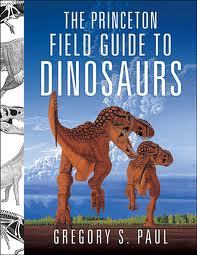Over the course of the last 500,000 years of Earth’s history, paleontologists have identified five relatively brief periods when many species went extinct about the same time. These events are called mass extinctions.
The most recent mass extinction occurred about 65 million years ago. The dinosaurs, the pterodactyls, and the plesiosaurs (long-necked, marine reptiles) failed to make it through this mass extinction.
We have some good insight into the reason for this mass extinction. A geologist, Walter Alvarez, discovered a thin layer of sediment at sites around the world that had high concentrations of the metal iridium.
Iridium is a rare element on Earth but is much more common in asteroids and meteors. Alvarez was able to date the age of this iridium-rich layer to about 65 million years ago. Alvarez suggested that an asteroid hit the Earth then and that the effects of the impact wiped out the dinosaurs and other species.
Alvarez’s hypothesis was a controversial one. But support for his explanation grew later when the outlines of a large crater, more than 100 miles in diameter, were found in the Caribbean just off the coast of the Yucatan peninsula. The smoking gun had been found! Dating of the sediments showed the crater was formed 65 million years ago.
The collision of such a massive object was 20 million times more powerful than the largest atomic bomb ever detonated. The impact would have created tsunamis that would have destroyed coastlines.
The red-hot debris thrown up into the atmosphere would have created fiery clouds hot enough to ignite fires and heat animals and plants to death.
Dust from the blast would have persisted in the atmosphere for years, plunging the Earth into a long, dark winter. Throw in acid rain and pollution and the post-impact earth was an inhospitable place.
Many children become captivated by dinosaurs. The success of films like “Jurassic Park” attests to the drawing power of the dinosaurs. Many of us would love to see dinosaurs in the flesh.
Perhaps we can. Paleontologists have collected evidence to support the idea that birds and dinosaurs are closely related. Dinosaurs may be living today in the form of our feathered friends.
What is the basis for claiming that birds arose from the dinosaurs?
First, we know that some dinosaurs had feathers. The likely dinosaur ancestors of birds (the theropod dinosaurs) shared with birds a distinctive wristbone that allows the hand to swivel, important for birds in powered flight.
The collar bones of both were fused (making the wishbone). The shoulder blades of both were strap-like, quite different from the typical scapula of other land vertebrates. Finally, scientists were able to extract some protein from a Tyrannosaurus bone and found that the protein was very similar to the modern chicken.
A fantastic new book on dinosaurs, “The Princeton Field Guide to Dinosaurs,” by Gregory Paul, has recently been published by Princeton University Press. Paul is an accomplished illustrator and expert in all things dinosaurian.
The first 60 pages of the book provide an introduction to dinosaur biology, morphology and techniques for studying these fossils. The information on how the limbs of dinosaurs articulated is particularly intriguing.
Using fossil evidence as well as comparisons to living vertebrates, Paul discusses the digestive tracts, respiratory systems, vocalizations, diseases, reproduction and social activities of dinosaurs. His fine illustrations provide nice accents to the text.
The meat of the book is the coverage of individual dinosaur species.
The guide is arranged in taxonomic order, beginning with the avepods (Tyrannosaurus and other predatory, bipedal dinosaurs) and continuing on with the sauropods (like the Brontosaurus that used to be on the logo of Sinclair gasoline signs) and the genasaurs (including the Triceratops, Stegosaurus, and duck-bill dinosaurs).
Species are illustrated with multiple drawings. Some species are known from only a few bones while we have complete skeletons for others. For species with fragmentary skeletons, Paul is careful to indicate the limits of our knowledge of these species.
Paul discusses the mass extinction that eliminated the dinosaurs. He offers some speculation of how our world would be different if dinosaurs had survived to the present.
The Earth would probably still be dominated by reptiles rather than the mammals that took over after the extinction of the dinosaurs. Paul argues that humans would not have arisen in the presence of the dinosaurs.
The delightful book can be read on two levels. It is a concise treatise on our knowledge of dinosaur biology and diversity. But is it also a book where the illustrations impel our imaginations to flights of fancy with these diverse and fascinating creatures.
Herb Wilson teaches ornithology and other biology courses at Colby College. He welcomes reader comments and questions at whwilson@colby.edu. Previous columns and other information on Maine birding can be found at his blog:
web.colby.edu/mainebirds/
Send questions/comments to the editors.



Success. Please wait for the page to reload. If the page does not reload within 5 seconds, please refresh the page.
Enter your email and password to access comments.
Hi, to comment on stories you must . This profile is in addition to your subscription and website login.
Already have a commenting profile? .
Invalid username/password.
Please check your email to confirm and complete your registration.
Only subscribers are eligible to post comments. Please subscribe or login first for digital access. Here’s why.
Use the form below to reset your password. When you've submitted your account email, we will send an email with a reset code.